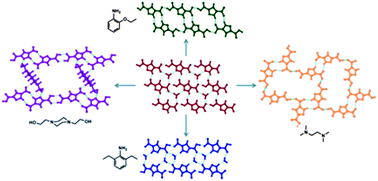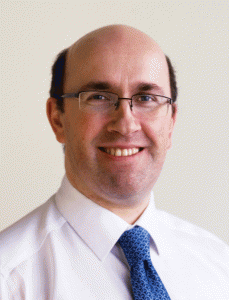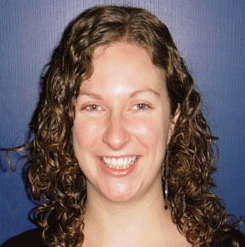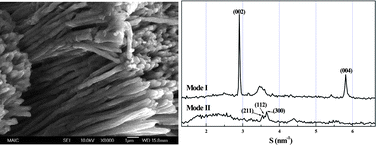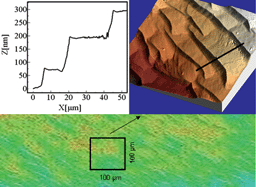Shao-Hua Yan, Xiang-Jun Zheng, Li-Cun Li, Da-Qiang Yuan and Lin-Pei Jin, Dalton Trans., 2011, Advance Article
DOI: 10.1039/C0DT00917B, Paper
Xiaochuan Duan, Xiaodi Liu, Qing Chen, Haobo Li, Jie Li, Xia Hu, Yingying Li, Jianmin Ma and Wenjun Zheng, Dalton Trans., 2011, Advance Article
DOI: 10.1039/C0DT01212B, Paper
Hai-Bao Duan, Hai-Rong Zhao, Xiao-Ming Ren, Hong Zhou, Zheng-Fang Tian and Wan-Qin Jin, Dalton Trans., 2011, Advance Article
DOI: 10.1039/C0DT00875C
Wael Darwish, Elisabeth Seikel, Ralf Käsmarker, Klaus Harms and Jörg Sundermeyer, Dalton Trans., 2011, Advance Article
DOI: 10.1039/C0DT00867B, Paper
Jian-Rong Li and Xiao-Ying Huang, Dalton Trans., 2011, Advance Article
DOI: 10.1039/C0DT01381A, Communication
Sherrie Elzey, Jonas Baltrusaitis, Shaowei Bian and Vicki H. Grassian, J. Mater. Chem., 2011, Advance Article
DOI: 10.1039/C0JM03705B, Paper
Guojun Gao, Sindy Reibstein, Mingying Peng and Lothar Wondraczek, J. Mater. Chem., 2011, Advance Article
DOI: 10.1039/C0JM03273E, Paper
Yong Kim, Dong-Kyu Shin, Eui-Chol Shin, Hyun-Ho Seo and Jong-Sook Lee, J. Mater. Chem., 2011, Advance Article
DOI: 10.1039/C0JM03242E, Paper
Caiyun Nan, Jun Lu, Chen Chen, Qing Peng and Yadong Li, J. Mater. Chem., 2011, Advance Article
DOI: 10.1039/C0JM04126B, Communication
Yang Tian, Binbin Yu, Xia Li and Kai Li, J. Mater. Chem., 2011, Advance Article
DOI: 10.1039/C0JM02913K, Paper
Haibing Xia and Xutang Tao, J. Mater. Chem., 2011, Advance Article
DOI: 10.1039/C0JM03635H, Communication
Ioannis Kanelidis, Aleksandar Vaneski, Daniel Lenkeit, Simon Pelz, Victoria Elsner, Raphaela M. Stewart, Jessica Rodríguez-Fernández, Andrey A. Lutich, Andrei S. Susha, Ralf Theissmann, Sylwia Adamczyk, Andrey L. Rogach and Elisabeth Holder, J. Mater. Chem., 2011, Advance Article
DOI: 10.1039/C0JM03546G, Paper
Byung-Il Lee, Su-Yeon Lee and Song-Ho Byeon, J. Mater. Chem., 2011, Advance Article
DOI: 10.1039/C0JM03149F, Paper
Suhyun Jung, Youngmee Kim, Sung-Jin Kim, Tae-Hwan Kwon, Seong Huh and Seongsoon Park, Chem. Commun., 2011, Advance Article
DOI: 10.1039/C0CC03288C, Communication
Yun Wang, Haimin Zhang, Yanhe Han, Porun Liu, Xiangdong Yao and Huijun Zhao, Chem. Commun., 2011, Advance Article
DOI: 10.1039/C0CC04848H, Communication
Yao Qin, Yin Song, Teng Huang and Limin Qi, Chem. Commun., 2011, Advance Article
DOI: 10.1039/C0CC05116K, Communication
Daqin Chen, Yunlong Yu, Feng Huang and Yuansheng Wang, Chem. Commun., 2011, Advance Article
DOI: 10.1039/C0CC04846A, Communication
Xu-Hui Jin, Jian-Ke Sun, Li-Xuan Cai and Jie Zhang, Chem. Commun., 2011, Advance Article
DOI: 10.1039/C0CC04084C, Communication
Antonio Alberola, Emma Carter, Christos P. Constantinides, Dana J. Eisler, Damien M. Murphy and Jeremy M. Rawson, Chem. Commun., 2011, Advance Article
DOI: 10.1039/C0CC04296J, Communication
Xianhui Meng, Jong Hak Lee, Min-Ho Park, Seong Man Yu, Dong-Wook Shin, Cheolwoong Yang, Vasant Bhoraskar and Ji-Beom Yoo, CrystEngComm, 2011, Advance Article
DOI: 10.1039/C0CE00643B, Communication
Clare M. Perrin, Mark A. Dobish, Edward Van Keuren and Jennifer A. Swift, CrystEngComm, 2011, Advance Article
DOI: 10.1039/C0CE00737D, Paper
Siu Yee New, Yude Thio, Lip Lin Koh, T. S. Andy Hor and Feng Xue, CrystEngComm, 2011, Advance Article
DOI: 10.1039/C0CE00444H, Paper
Feng Cao, Deqiang Wang, Ruiping Deng, Jinkui Tang, Shuyan Song, Yongqian Lei, Song Wang, Shengqun Su, Xiangguang Yang and Hongjie Zhang, CrystEngComm, 2011, Advance Article
DOI: 10.1039/C0CE00392A, Paper
Chih-Chieh Wang, Wen-Chun Chung, Hui-Wun Lin, Shuen-Chieh Dai, Jia-Shiuan Shiu, Gene-Hsiang Lee, Hwo-Shuenn Sheu and William Lee, CrystEngComm, 2011, Advance Article
DOI: 10.1039/C0CE00644K, Paper
Zhoujing Xing, Baoyou Geng, Xuelian Li, Han Jiang, Chengxin Feng and Ting Ge, CrystEngComm, 2011, Advance Article
DOI: 10.1039/C0CE00741B, Paper
Wolfgang Wisniewski, Ruzha Harizanova, Günter Völksch and Christian Rüssel, CrystEngComm, 2011, Advance Article
DOI: 10.1039/C0CE00629G, Paper
Xianluo Hu, Qingming Ji, Jonathan P. Hill and Katsuhiko Ariga, CrystEngComm, 2011, Advance Article
DOI: 10.1039/C0CE00466A, Paper
Jane Fletcher, Dominic Walsh, Christabel Emma Fowler and Stephen Mann, CrystEngComm, 2011, Advance Article
DOI: 10.1039/C0CE00806K, Paper
Rencheng Jin, Gang Chen, Qun Wang, Jian Pei, Jingxue Sun and Yang Wang, CrystEngComm, 2011, Advance Article
DOI: 10.1039/C0CE00455C, Paper
Katsuya Teshima, SunHyung Lee, Takahiro Ishizaki, Shoko Mori, Chikara Mori, Kunio Yubuta, Takanori Ichiki, Toetsu Shishido and Shuji Oishi, CrystEngComm, 2011, Advance Article
DOI: 10.1039/C0CE00405G, Communication
 Read more:
Read more:










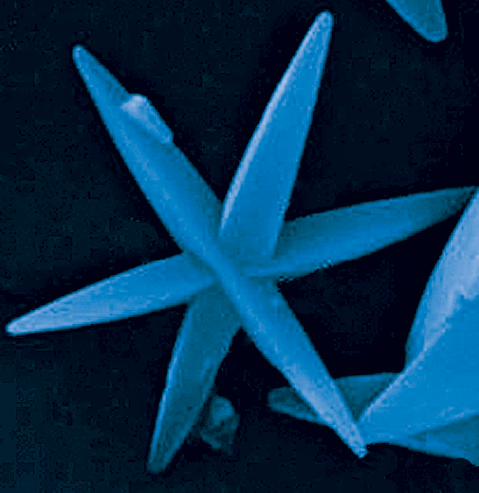

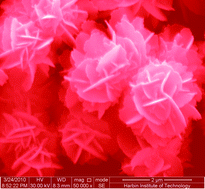
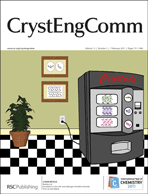 The latest issue of CrystEngComm is now online.
The latest issue of CrystEngComm is now online. 